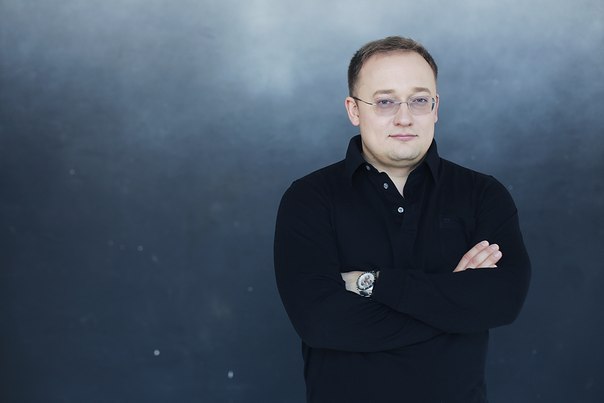The head of Odnoklassniki Anton Fedchin spoke about the capture of the Internet by video content
The head of Odnoklassniki Anton Fedchin is sure that Internet users in general and social networks in particular will continue to increase video content consumption - the video audience in Russia is growing faster than the Runet audience, and now the online video market in the country is second only to the United States. The growth of the audience is facilitated by the emergence of new formats and improved communication quality.

70 million Russians watch videos on the Internet. Every day they spend about 50 minutes on it. The impetus for the development of new formats and the emergence of new users on the Internet was given by the spread of Wi-Fi, 3G and LTE networks: for fifteen years the number of users on Runethas grown ten times. The Russian online video market has become one of the most important world markets; it is second only to the United States with its 195 million users. Experts are sure that by 2018 the number of viewers in Russia will exceed 100 million people, the audience will grow by eighteen percent every year.
Anton Fedchin says that Odnoklassniki started developing a video service two years ago, and over the past year the number of views has doubled, and next year the project predicts a doubling.
Facebook videos earn 8 billion views a day and are watched by 500 million people. The social network automatically includes videos in the feed while watching it. This allows Facebook to make money, because video ads cost more than banners.
In the 1990s, the Internet in Russia was wired and slow. Now mobile devices are the driver of audience growth. For example, 894 million people visit Facebook every day from mobile gadgets, and 727 million use this social network exclusively from mobile. The speed and cheapness of the Internet allows you to consume more video content, the television audience goes online.
One of the important trends in Runet is the arrival of television on the Internet. Now in Russia, half of the video services are either representatives of television channels or interact with them. At Odnoklassniki, 10 million people visit the Video section daily; they make 235 million views per day. The STS channel showed the premiere of its series “Quest” in Odnoklassniki before broadcasting it on TV.
Fedchin notes that in the West, the Internet and TV have long been intertwined, and he cites Netflix and HBO as examples : these companies, which were cable networks, began to actively use the Internet. Now more people know HBO than federal American television channels. Because it is this company that is filming the Game of Thrones series , which breaks records for torrents. At Odnoklassniki, Lifenews and Dozhd broadcast live from groups, receiving a quarter of a million views every day.
The head of Odnoklassniki is confident that the time for watching a video will continue to grow, this will take away the attention of users from other formats. The business will integrate more with the digital environment; advertisers will invest in digital. For the users themselves, it becomes easier to shoot the video on the camera than to write the text.

70 million Russians watch videos on the Internet. Every day they spend about 50 minutes on it. The impetus for the development of new formats and the emergence of new users on the Internet was given by the spread of Wi-Fi, 3G and LTE networks: for fifteen years the number of users on Runethas grown ten times. The Russian online video market has become one of the most important world markets; it is second only to the United States with its 195 million users. Experts are sure that by 2018 the number of viewers in Russia will exceed 100 million people, the audience will grow by eighteen percent every year.
Anton Fedchin says that Odnoklassniki started developing a video service two years ago, and over the past year the number of views has doubled, and next year the project predicts a doubling.
Facebook videos earn 8 billion views a day and are watched by 500 million people. The social network automatically includes videos in the feed while watching it. This allows Facebook to make money, because video ads cost more than banners.
In the 1990s, the Internet in Russia was wired and slow. Now mobile devices are the driver of audience growth. For example, 894 million people visit Facebook every day from mobile gadgets, and 727 million use this social network exclusively from mobile. The speed and cheapness of the Internet allows you to consume more video content, the television audience goes online.
One of the important trends in Runet is the arrival of television on the Internet. Now in Russia, half of the video services are either representatives of television channels or interact with them. At Odnoklassniki, 10 million people visit the Video section daily; they make 235 million views per day. The STS channel showed the premiere of its series “Quest” in Odnoklassniki before broadcasting it on TV.
Fedchin notes that in the West, the Internet and TV have long been intertwined, and he cites Netflix and HBO as examples : these companies, which were cable networks, began to actively use the Internet. Now more people know HBO than federal American television channels. Because it is this company that is filming the Game of Thrones series , which breaks records for torrents. At Odnoklassniki, Lifenews and Dozhd broadcast live from groups, receiving a quarter of a million views every day.
The head of Odnoklassniki is confident that the time for watching a video will continue to grow, this will take away the attention of users from other formats. The business will integrate more with the digital environment; advertisers will invest in digital. For the users themselves, it becomes easier to shoot the video on the camera than to write the text.
